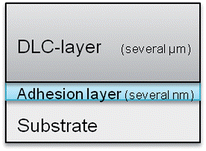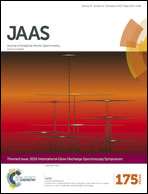Compositional depth profiling of diamond-like carbon layers by glow discharge optical emission spectroscopy
Abstract
This article describes the compositional depth profiling (CDP) of diamond-like carbon (DLC) layers by Glow Discharge-Optical Emission Spectrometry (GD-OES). The DLC layers were deposited on flat steel samples. Analysis by using a Charge Coupled Device (CCD) GD-OES instrument revealed saturation effects of the carbon lines at 156 nm and 165 nm. Therefore, the application of these lines for CDP of DLC layers is not possible. A third line at 193 nm was not affected by this saturation effect and is therefore a good choice for calibration. A second effect was observed as a non-flat crater in combination with large differences of the sputtering rate factor of the substrate (1.1) and the DLC (0.032) led to an unusual behaviour at the interface between the DLC layer and substrate. Both measurements of the crater shape and of the sputtered coating weight up to the interface and just behind it showed clearly that about 30% of the DLC layer remains at the crater edge, once the crater centre reaches the interface. This was found to be the main reason for the incorrect DLC-layer thickness, if the intersection between the carbon and iron concentration was used as a measure for the end of the DLC layer.

- This article is part of the themed collection: Glow Discharge Spectroscopy

 Please wait while we load your content...
Please wait while we load your content...